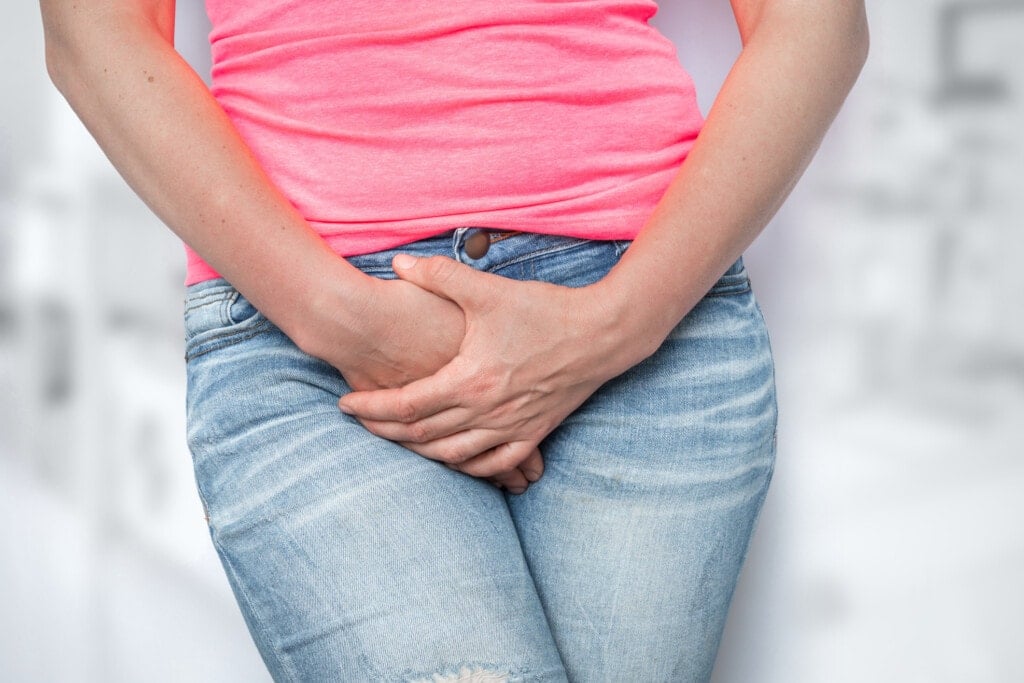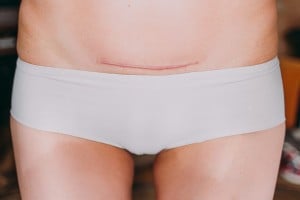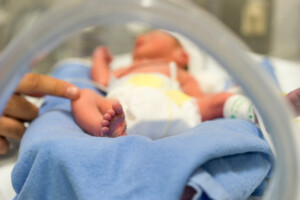During and after pregnancy, the body undergoes drastic changes, from growing your baby to healing after birth. As organs adjust and all muscles, bones, and ligaments around the lower abdomen stretch, more pressure is placed on your bladder and pelvic floor muscles. This can result in decreased bladder control and/or increased urinary urgency. This is called postpartum incontinence, affecting more women than you think. Approximately one in three new moms experience some degree of postpartum urinary incontinence.1
Three types of urinary incontinence can affect new moms, so it’s important to understand which one you are dealing with before devising a treatment plan. So, let’s get into identifying and managing postpartum incontinence!
Types of Urinary Incontinence
As mentioned above, there are three types of urinary incontinence, each with different causes and symptoms. Let’s break them down below:
Stress Urinary Incontinence
Stress urinary incontinence is more of a physical incontinence. This occurs when somebody coughs, laughs, or sneezes, increasing abdominal pressure. The pelvic floor muscles, or the urethral sphincter, don’t have enough strength to resist the increased abdominal pressure. As a result, the muscles give, and the urethra opens, causing bladder leakage.
Stress incontinence can result from pregnancy and any delivery. While it’s more common among women who had a vaginal delivery, women can still develop stress incontinence from a C-section. The increased abdominal pressure during pregnancy weakens the abdominal and pelvic floor muscles, making it harder to prevent leakage.
Urge Incontinence
Urge incontinence is when you strongly desire to go to the bathroom. It’s usually caused by the bladder muscle receiving possibly false signals from the nervous system that say, “Hey, we’re full. We’ve got to go to the bathroom.” As a result, the muscle will start squeezing before you’re in the bathroom. This causes the sensation of increased fullness and pressure in your pelvis, so you’ll need to rush to the bathroom suddenly.
In some cases, you may leak on the way there. Again, the connection from the nervous system to your detrusor muscle, which is at the bladder, is not getting the right signals to say, “Hey, I’m sitting here in a bathroom.” This gives you very little control over these urges.
Urge incontinence is more common in women who have had a C-section since the surgery requires manipulating some of the nerves in the area. If the nerves that go to the bladder have been compromised, the main one being the S3 nerve, that can cause an overabundance of signals to be sent to the bladder and cause a feeling of urgency.
Mixed Urinary Incontinence
Mixed incontinence is a combination of stress and urge incontinence. One may be worse than the other, so in many cases with mixed incontinence, it’s helpful to get a bladder function test done to identify the main issues.
Managing Postpartum Incontinence
There is no one-size-fits-all treatment plan for women dealing with postpartum incontinence. But there are several things women can do to help manage the condition and prevent bladder leakage.
1. Avoid Food/Drink That Irritates the Lining of the Bladder
If you notice certain foods/drinks cause problems and irritation, try to avoid those. The most common culprits of bladder irritation are spicy foods, citrus, tomato-based foods, and caffeine. Everyone is different, so listen to your body and recognize what your trigger foods or beverages might be. An excellent way to keep track of this is by keeping a food diary.
2. Stay Hydrated
Most people don’t drink enough water, but pregnant women especially do not. While pregnant, your blood volume increases by half, meaning you get more concentrated urine. More concentrated urine can cause urgency and irritate the bladder lining too. Increasing your water intake during pregnancy to anywhere between 80 to 100 ounces of water a day is important. This may sound backward given the added pressure on the bladder during pregnancy that causes more frequent urination. Still, if you get into a good habit of drinking enough water before and during pregnancy, you’re already prepping your system and will hopefully continue this habit postpartum, especially if breastfeeding.
3. Work on Urgency Deferral
Nobody should go longer than two hours between urinating, which means if you are hydrated enough, you should go to the bathroom every two hours. An important part of urgency deferral is ensuring you’re not waiting too long in between voids and reaching that threshold of no return where you’re rushing to go. For pregnant women, if you’re staying hydrated enough, that means you may be going to the bathroom every hour and a half to two hours or one to two hours.
4. Focus on More Than Kegels
There seems to be a misconception that Kegel exercises and focusing solely on the pelvic floor muscles can help with recovery after pregnancy. But that’s severely misguided. It’s so much more than the pelvic muscles that you need to work. During pregnancy, your uterus expands, your abdominal muscles stretch out, and your back and hip muscles are compromised. You need more of a nipples-to-knees exercise regimen focusing on strengthening these muscles. So, while Kegels are great, they can only get you so far. Layering these different types of exercises works best because all these muscles work together.
5. Talk to Your Doctor About Pelvic Floor Physical Therapy
While you can do a few exercises at home to strengthen these muscles, your best and safest bet is pelvic floor physical therapy. Every pregnancy is different. Every woman’s pelvic floor has a different response to pregnancy and delivery, making it important to see someone who understands pelvic anatomy. Ideally, women should be sent to pelvic floor PT during pregnancy and again six weeks afterward. To recover properly and avoid issues, it is recommended to get the help of a trainer who can guide new moms through exercises to help strengthen their bodies. This is extremely valuable, especially when dealing with diastasis recti, which often presents concurrently with stress incontinence.
Take Postpartum Incontinence Seriously
After giving birth, if you go to the bathroom every half hour to an hour or are experiencing bladder leakage, it’s important to seek medical attention. It’s well known that the bladder and urethra can have trauma during both vaginal and cesarean types of deliveries. It’s easy for many women to think incontinence is normal because they had a baby. But just because it’s common does not make it something to dismiss.
In addition to the lifestyle changes mentioned above, a key part of preventing and treating postpartum incontinence is getting women into pelvic floor PT sooner rather than later. In a perfect world, every woman would have a pelvic PT examination before getting pregnant, get an evaluation during pregnancy, and continue pelvic floor PT through postpartum. If we made pelvic floor PT a routine part of women’s healthcare, there would be much fewer instances of pelvic organ prolapse and urinary incontinence.
Postpartum incontinence should not be taken lightly. Women must advocate for themselves before, during, and after pregnancy to ensure they are healing quickly and properly. This will also help ensure that any immediate issues experienced after delivery do not become long-term problems.


































